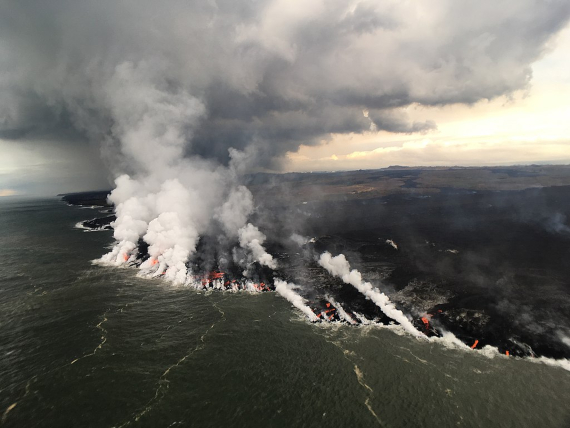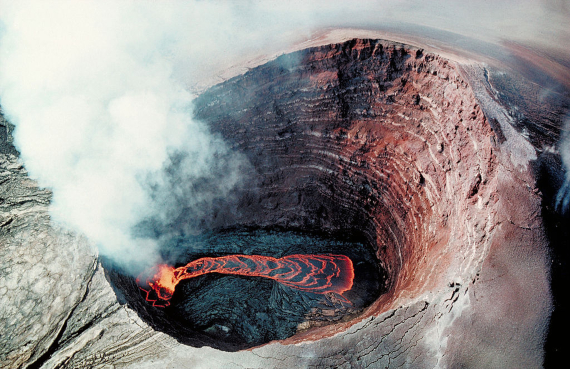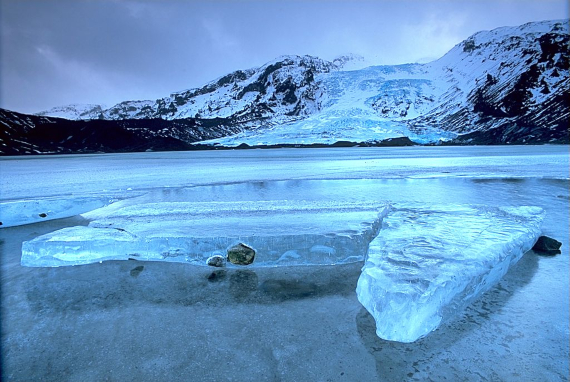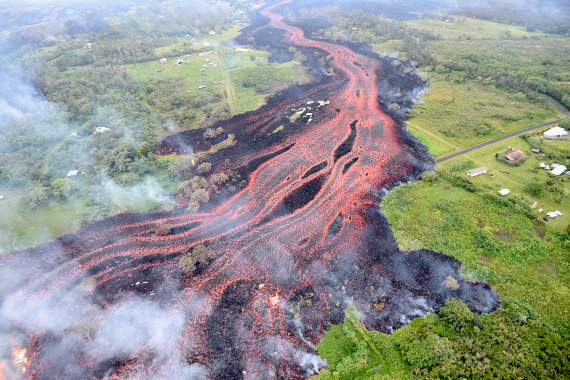A volcanic eruption is one of the greatest natural spectacles this planet has to offer, but one that we rarely get to see live. However, there are a handful of volcanoes on Earth in which the event is drawn out and magma continues to be ejected for decades. One of these is Kilauea on the Big Island of Hawaii. For 35 years, anyone who has had the chance to get close to this volcano has been able to observe nature’s fury, with cascades of lava pouring into the sea. The eruption finally ended in 2018, but some experts warn that one of the most unexpected consequences of climate change could be to increase the frequency of these eruptive phenomena. In fact, according to a recent study, Kilauea’s last hurrah (for the moment) may have been triggered by a prior period of unusually heavy rainfall.

Since the beginning of the eruption in 1983, Kilauea had been expelling lava continuously, mostly through the so-called upper eastern rift zone, creating a new cone named Puʻu ʻŌʻō. For decades, the authorities had controlled the paths of the lava flows, to such an extent that the National Park that encircles the volcano could be visited without risk in the demarcated areas. But on 3 May 2018, a new fissure opened in the lower eastern zone, throwing plumes of magma 60 metres in the air and redirecting the incandescent flow, with devastating effects on the housing developments in the southeast of the island. Finally, in September of the same year, Kilauea fell silent, and has remained so to this day, although perhaps not for long.
Volcanologists Falk Amelung and Jamie Farquharson at the University of Miami (USA) wondered about the cause of Kilauea’s sudden final conceit, so they modelled the temporal evolution of the pressures in the structure of the volcano. It is a clogging of the internal chambers that finally leads to the rupture of the rock shell and the expulsion of the magma to the surface through the new open fissures. However, while the progressive build-up of pressure often visibly swells the ground before an eruption, the two researchers did not find this to be the case during the year prior to the episode, so they began to seek alternative explanations.
The infiltration of water increase the pressure
One of them was at first glance improbable; in the months before this final eruption, the Hawaiian archipelago received an exceptional volume of rainfall. In the first quarter of 2018, more than 2.25 metres of rain fell on the volcano, a figure well above the average of 0.9 metres in the previous 19 years. The infiltration of this huge amount of water into the ground could have raised the internal pressure, the researchers thought. “The water from the ocean stays at constant level, so it does not create any perturbation. Rainfall on land does,” Amelung told OpenMind.

When they introduced the rain factor into their model, they found that this infiltration substantially increased the internal pressure between one and three kilometres below the surface to a level not seen in almost 50 years, which could have led to the rock fracturing and the magma being ejected, as the researchers describe in their study, published in Nature. Amelung and Farquharson have also found that previous eruptions of Kilauea often correspond to seasons of heavy rain. “We knew that changes in the water content in the Earth’s subsurface can trigger earthquakes and landslides. Now we know that it can also trigger volcanic eruptions,” proposes Amelung.
However, the correlation between heavy rainfall and volcanic eruptions has not yet convinced all experts that there is necessarily a causal link between the two phenomena. Michael Manga, a geophysicist at the University of California at Berkeley (USA), who penned a commentary in Nature on Farquharson and Amelung’s study, told OpenMind: “I don’t think they made a strong case for Hawaii, but I do think this topic is important to study and understand.”
The retreat of glaciers
Manga argues that the change in the Kilauea eruption could be explained without resorting to the action of rain: “Leading up to the big changes in 2018, the lava levels at the summit started to change and it was anticipated that the volcano was going to change where and how it was erupting.” This phenomenon, he says, has a greater impact on the pressure than rain. In fact, he adds, “the pressure changes they calculate are equivalent to the weight of 10 cm of water,” an effect “smaller than the changes caused by the tides created by the Moon.” Manga also considers that the effect of rain is “tiny” compared to another that the geophysicist himself has investigated: the retreat of glaciers.

“The idea is similar. The weight of a glacier puts extra pressure on magma. When the glacier melts, the weight is removed and it is easier for magma to erupt,” summarizes Manga. One place where this phenomenon could have been decisive in the past is Iceland, a region of glaciers and volcanoes. In a new study, researchers from the University of Leeds (UK) and other institutions are examining what they call “Climatic Control on Icelandic Volcanism“.
“Our work suggests that there is a lag period between glacier retreat and volcanic response of at least 2-4 centuries, which is likely due to the time needed for the crust to respond to the reduction of pressure, and for any shallow stored magma to be transported to the surface,” the study’s first author, Claire Cooper, told OpenMind. The volcanologist adds that the possible incidence of this same phenomenon in other volcanic regions of the planet is being studied, such as the Russian peninsula of Kamchatka and the southern zone of the Andes in Chile.
The work of Cooper and her collaborators analyses what happened in the past, during the advance and retreat of the ice masses over thousands of years of glacial and interglacial periods. But in our time, scientists have been warning for years about the rapid retreat of glaciers due to human-induced climate change. The volcanologist is cautious when assessing whether this loss of glaciers could lead to a more immediate increase in the risk of volcanic eruptions, but believes that, in any case, “increased monitoring would likely be the best defence.”

However, Farquharson and Amelung are more forceful. Episodes of extreme rainfall in certain regions are also part of the picture of symptoms of climate change. In their study, the researchers warn: “the increasingly extreme weather patterns associated with ongoing anthropogenic climate change could increase the potential for rainfall-triggered volcanic phenomena worldwide.” According to Amelung, their preliminary data have identified other volcanoes that erupt more frequently during wet seasons than dry seasons. “By better understanding the hydromechanical couplings between rainfall and volcanism, advanced warning of rainfall-induced volcanic hazards may be achievable,” the researchers conclude.
Comments on this publication